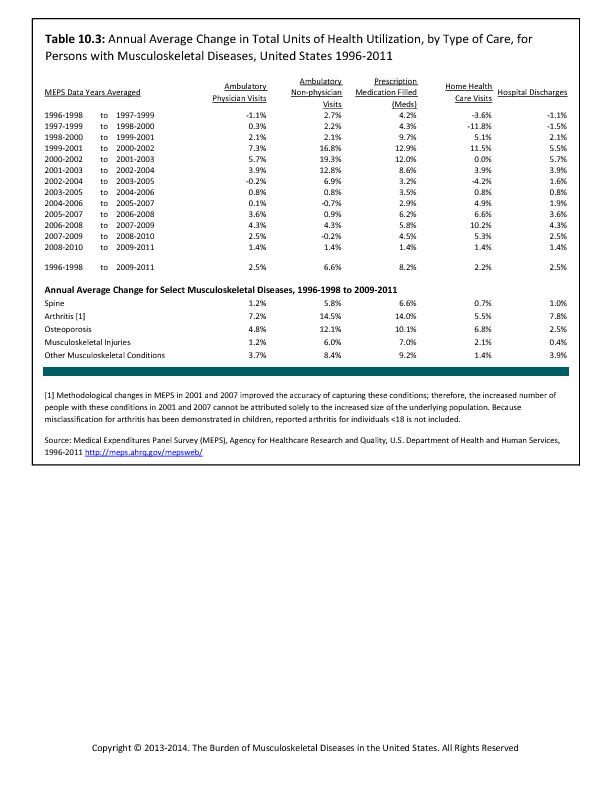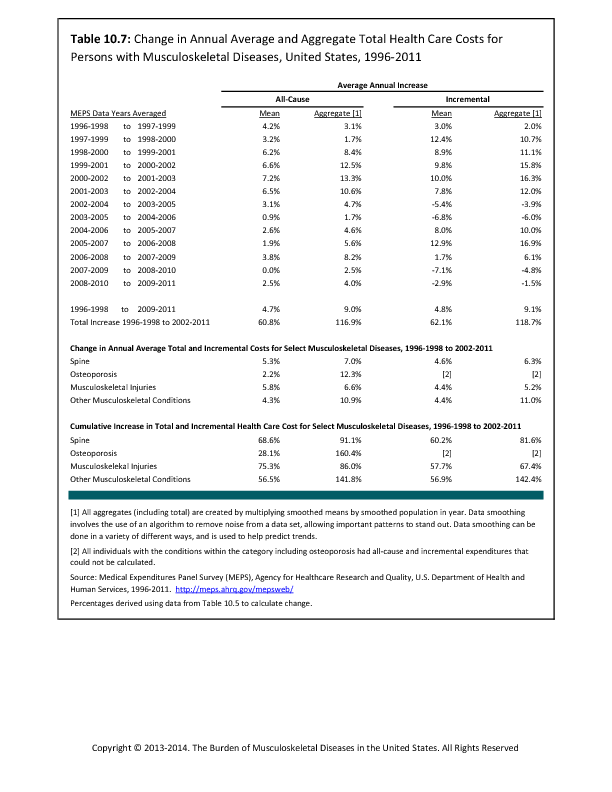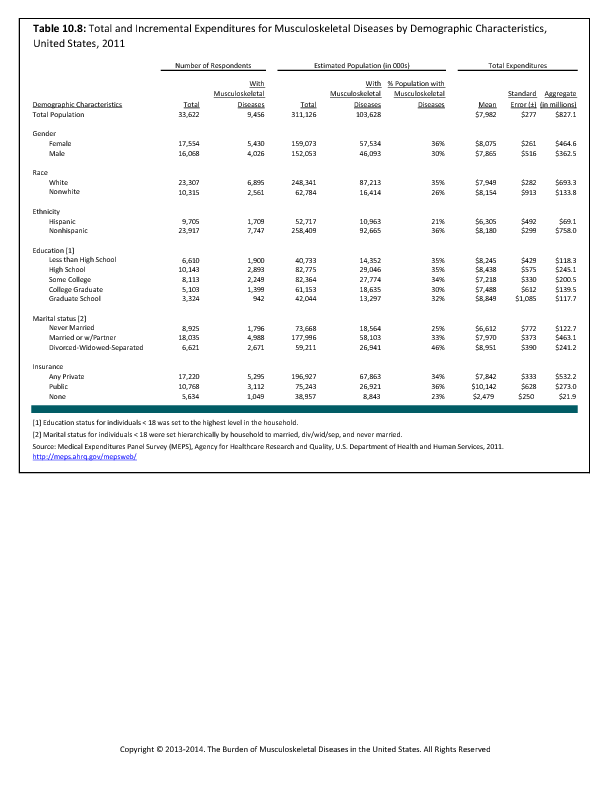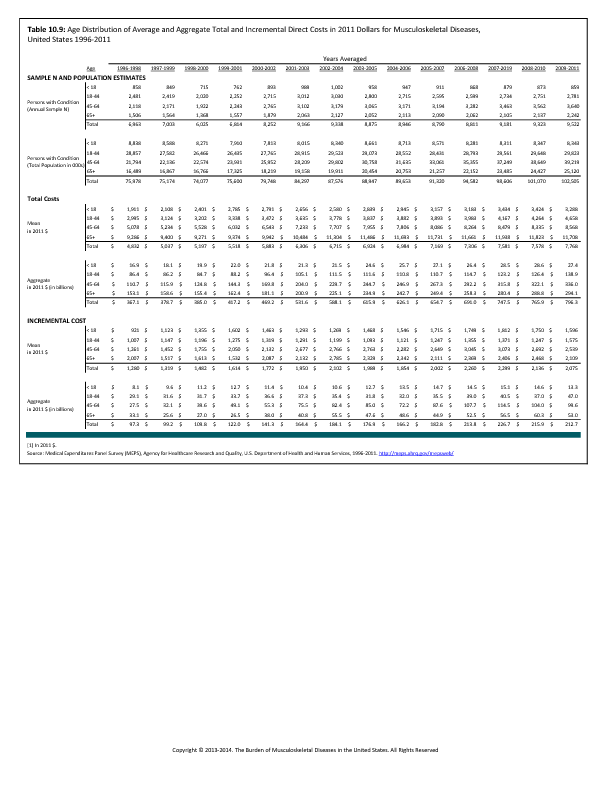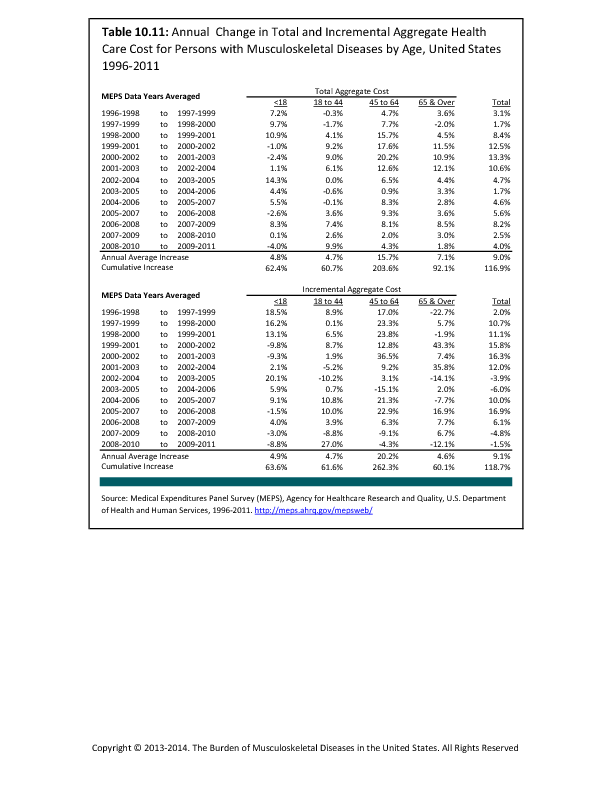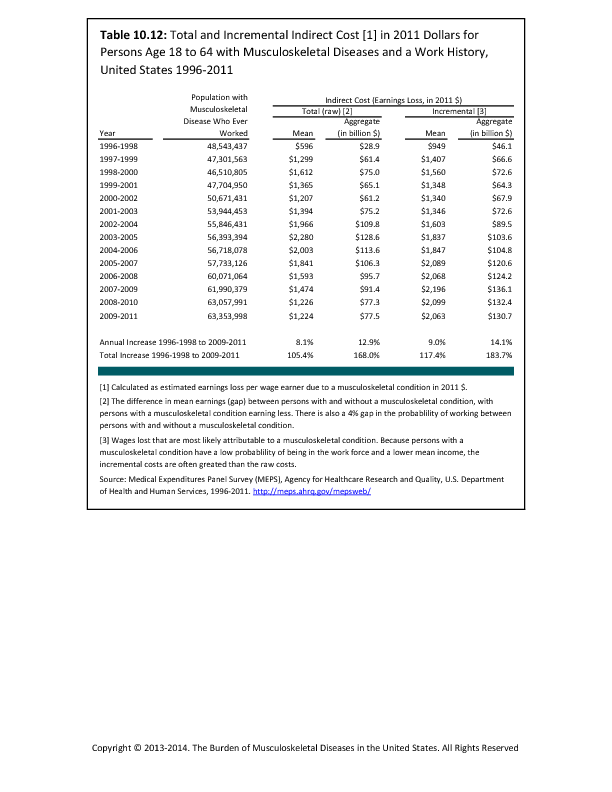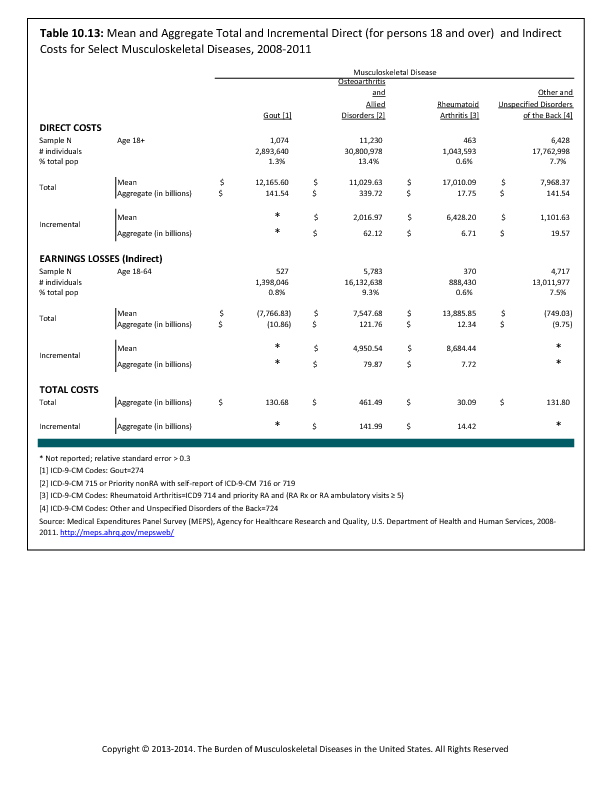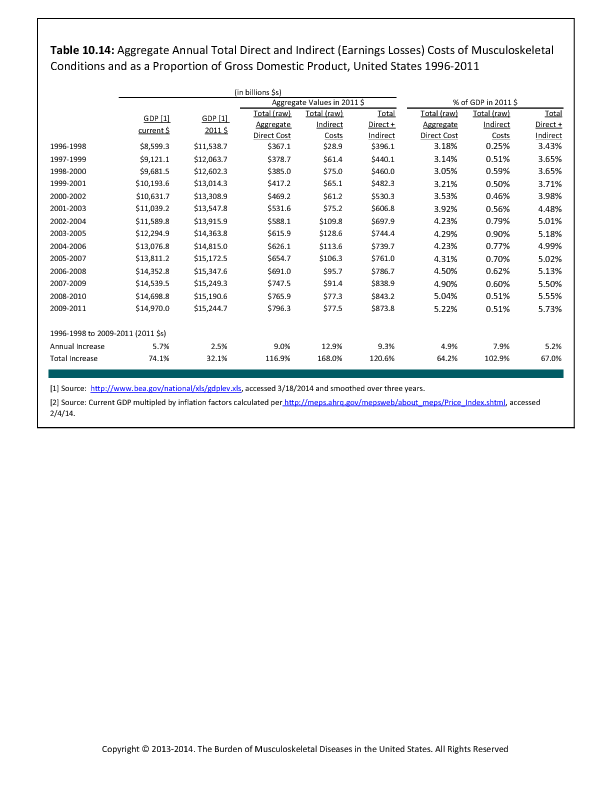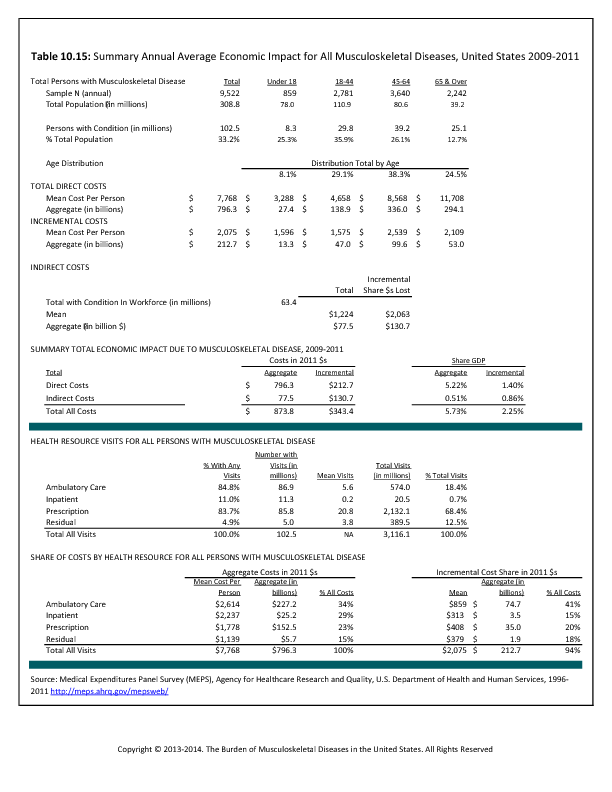Between the years 1996 to 1998 and 2009 to 2011, the Gross Domestic Product (GDP), in constant 2011 dollars, has risen from $11.5 trillion to $15.2 trillion, an increase of 32%.1 Over the same two time frames, total direct and indirect costs of musculoskeletal conditions rose from $396.1 billion to $873.8 billion. This is an increase of 121%, or nearly four times the rate of increase as the GDP. 
As a share of GDP, using the same 2011 dollars base, total direct and indirect costs for musculoskeletal conditions increased by 67%, from 3.43% to 5.73%. Indirect costs saw a sharper rate of increase of slightly more than 100%. However, indirect cost are a much smaller share of total cost than direct costs, constituting 0.25% of GDP in 1996 to 1998 and 0.51% in 2009 to 2011. Direct costs rose from a 3.18% share to a 5.22% share over the same time period. (Reference Table 10.14 PDF CSV)
To provide a basis for comparison, the economy is said to be in a recession when GDP declines by at least 1% for two or more consecutive quarters. Accordingly, the aggregate economic impact of the medical expenditures attributable to persons with musculoskeletal diseases is far in excess of the amount used to define a recession and, unlike a recession, occurs in perpetuity.
- 1. Agency for Healthcare Research and Quality: Medical Expenditure Panel Survey. Available at:Current GDP multiplied by inflation factors calculated per http://meps.ahrq.gov/mepsweb/about_meps/Price_Index.shtml. Accessed November 11, 2014.
Edition:
- 2014

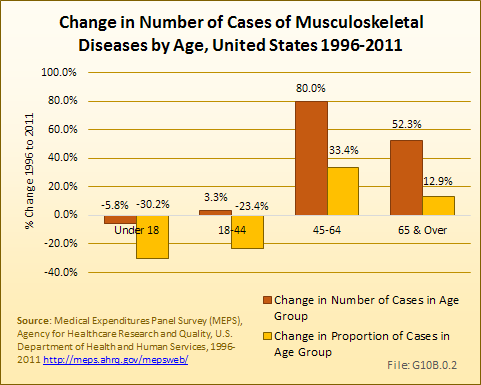
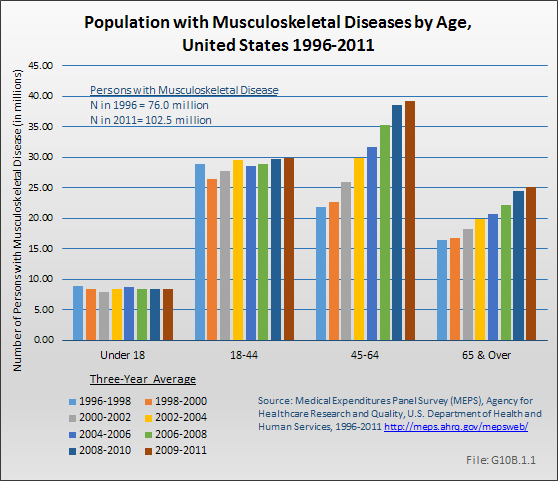
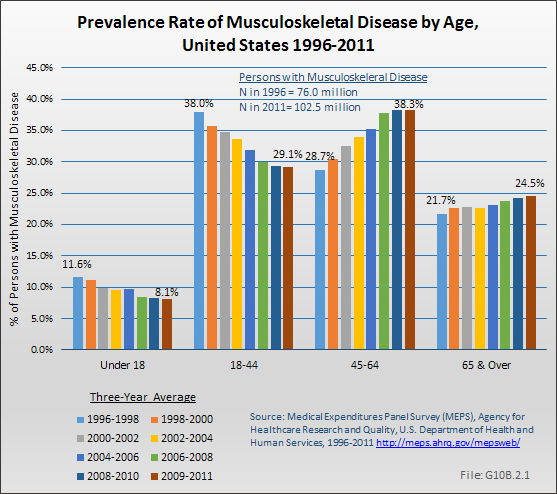


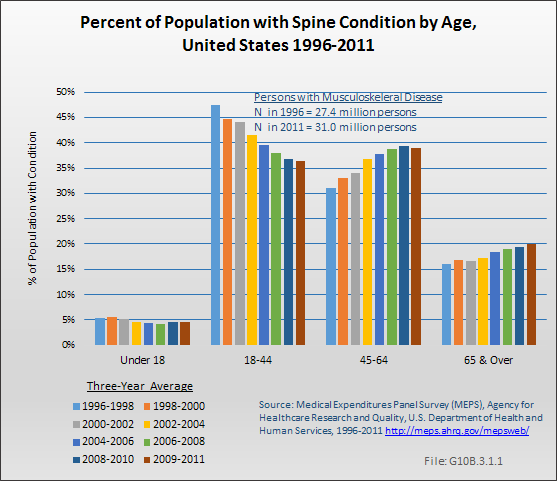







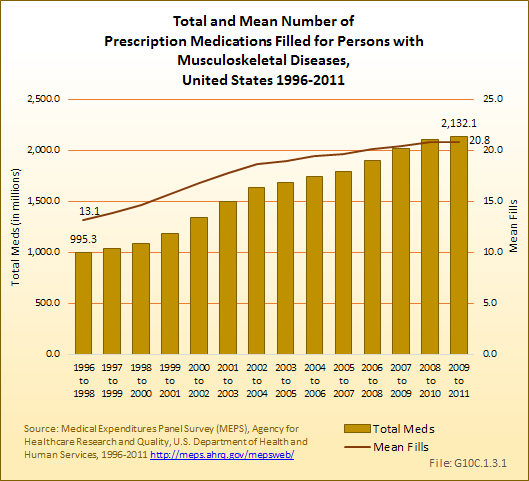



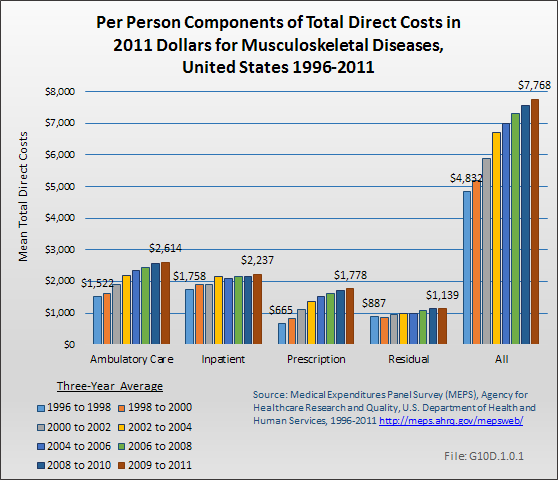

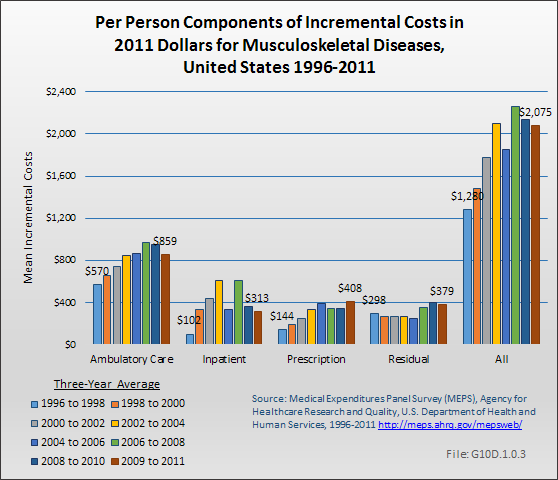


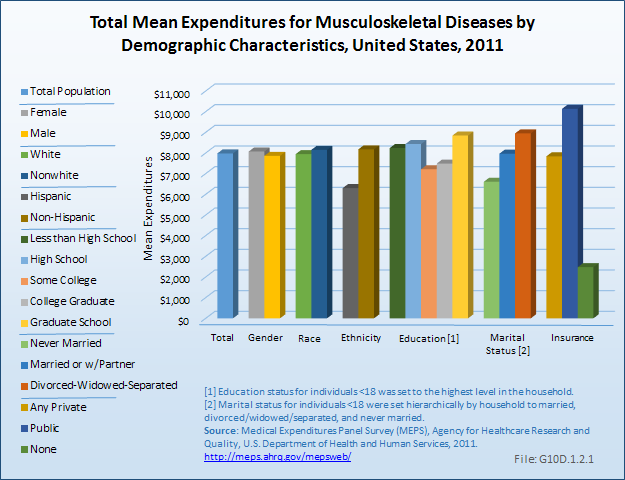
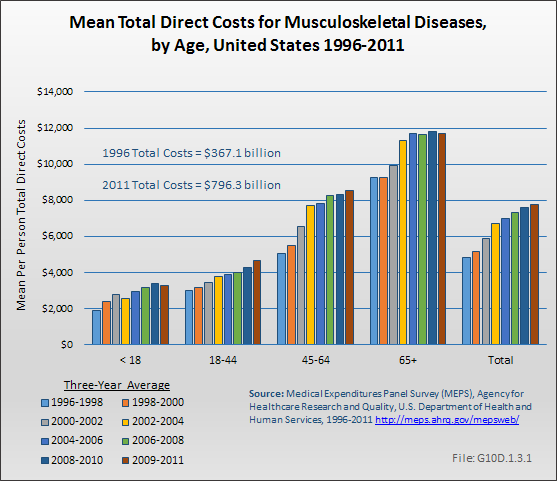

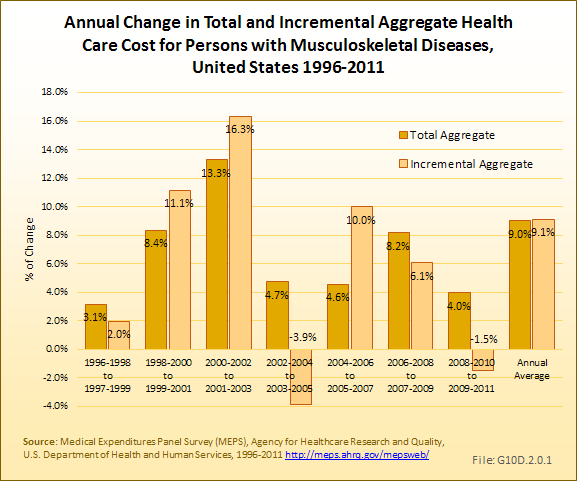

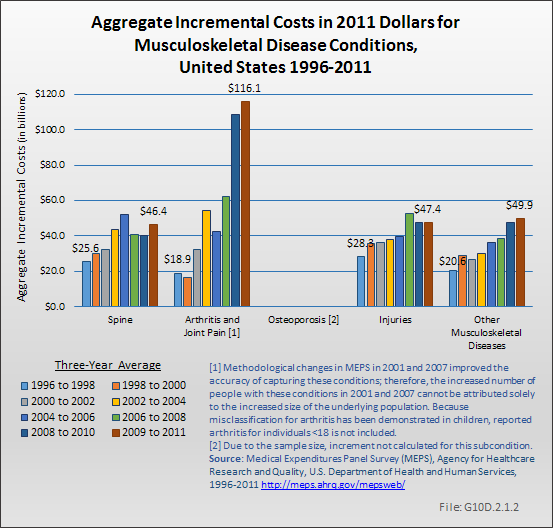
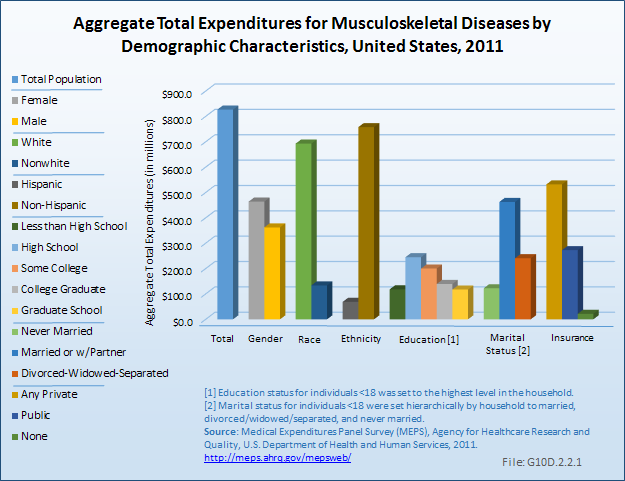
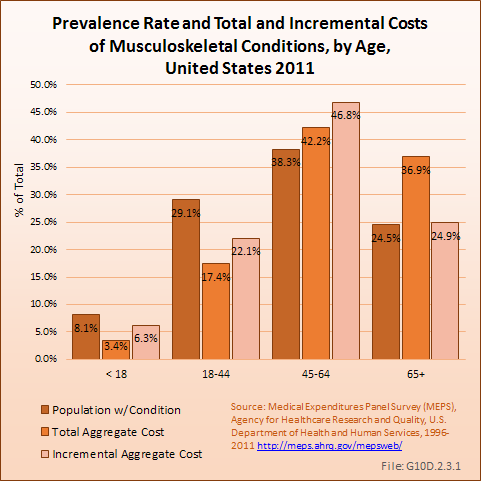
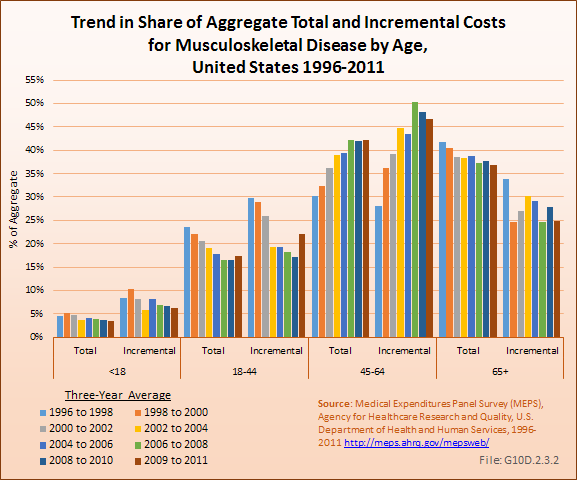


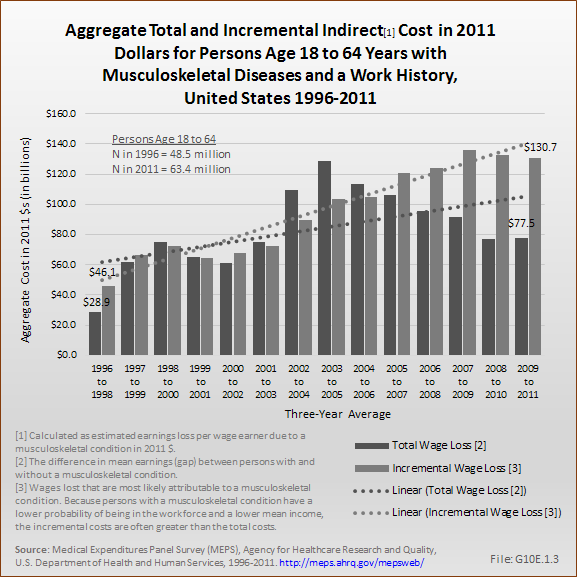


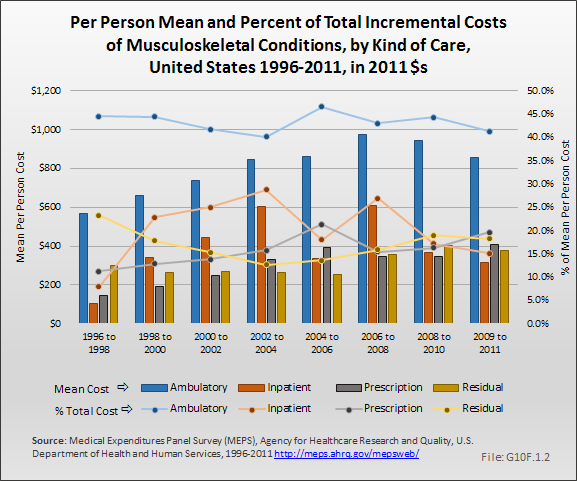
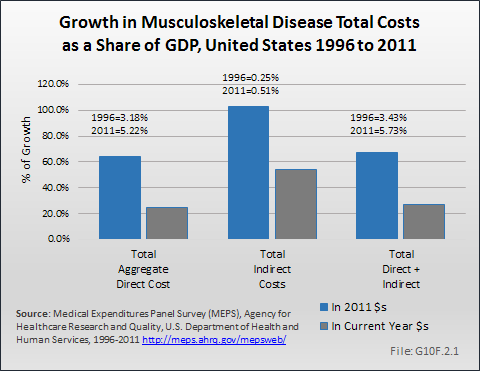


 Download as CSV
Download as CSV


